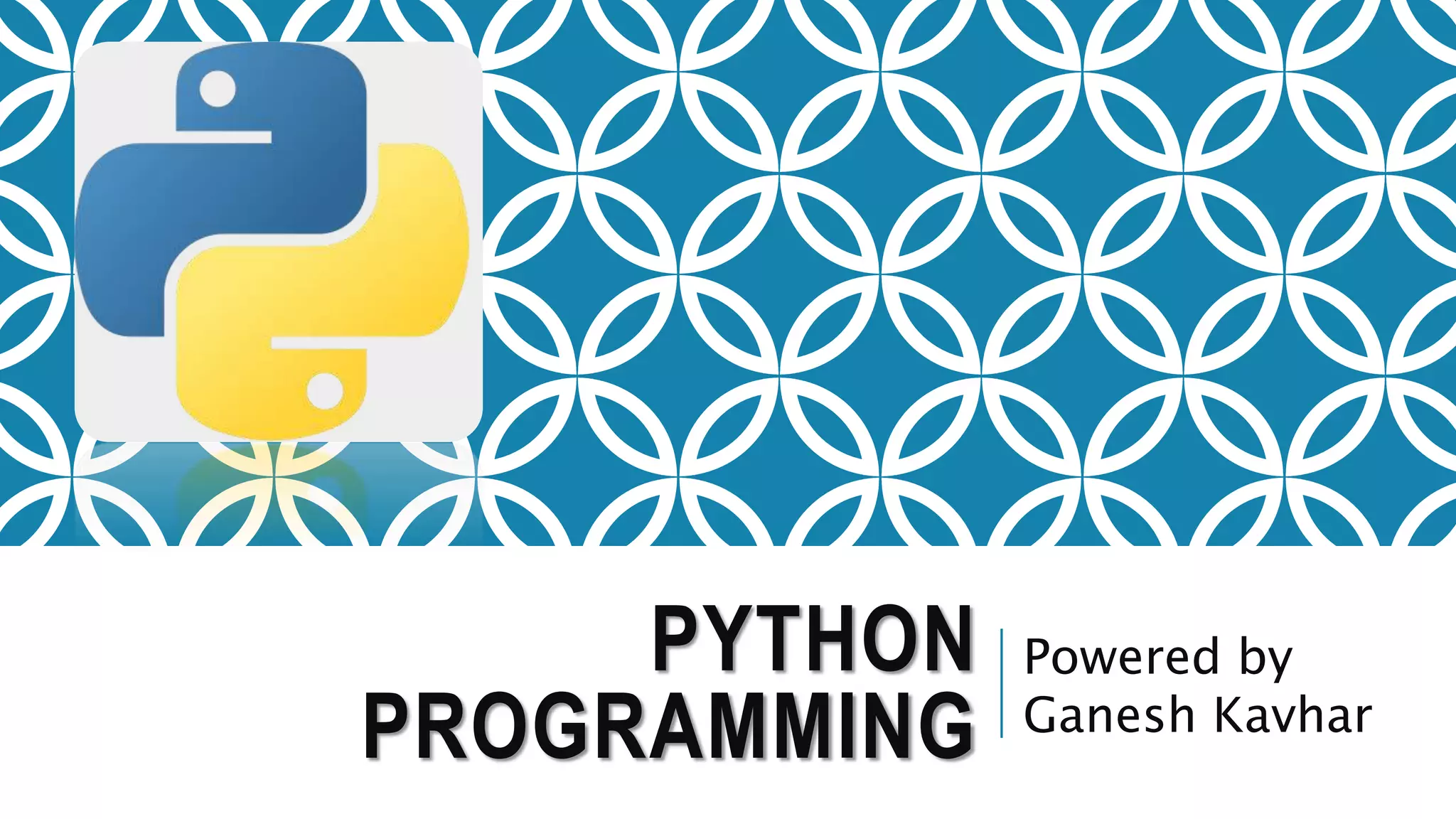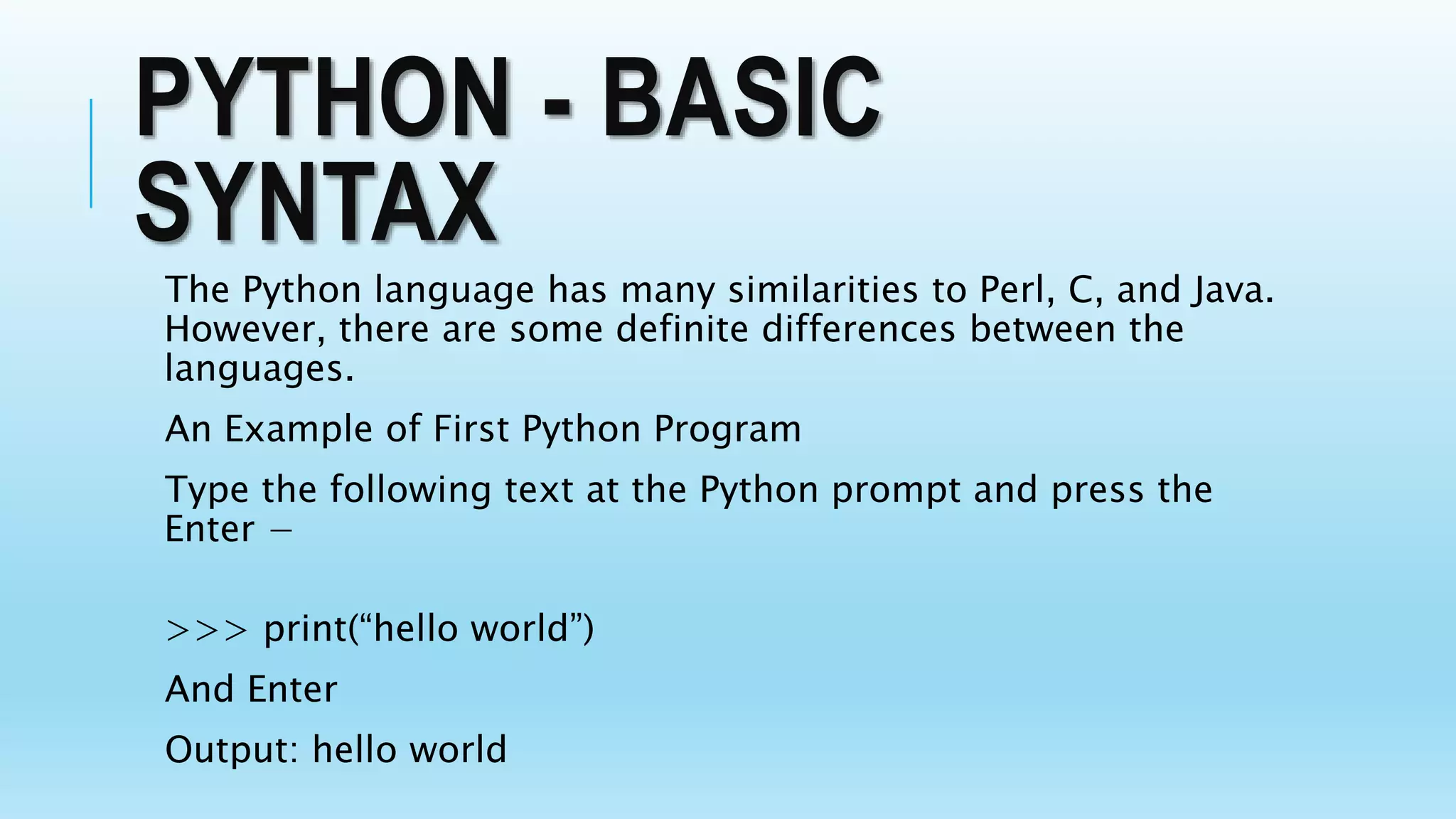This document provides an introduction to the Python programming language. It discusses that Python is an interpreted, object-oriented, high-level programming language created by Guido van Rossum. It then covers some of Python's key features, including being easy to learn, having a broad standard library, supporting interactive and GUI programming, and being portable, extensible and scalable. Finally, it provides a basic syntax example of a first Python program that prints "hello world".





